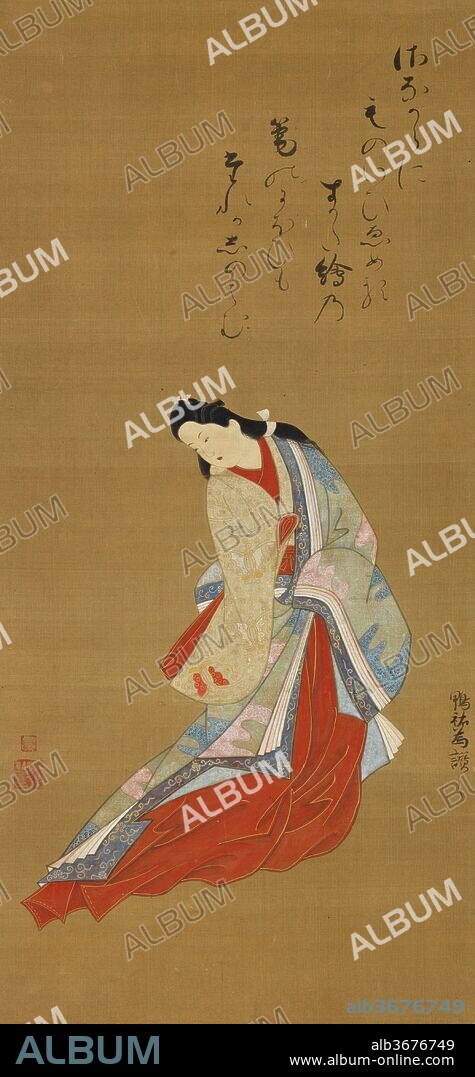alb3676749
TOSENDO RIFU, INSCRIBED BY KAMO NO SUKETAME. Standing Courtesan

|
Zu einem anderen Lightbox hinzufügen |
|
Zu einem anderen Lightbox hinzufügen |



Haben Sie bereits ein Konto? Anmelden
Sie haben kein Konto? Registrieren
Dieses Bild kaufen

Titel:
Standing Courtesan
Untertitel:
Siehe automatische Übersetzung
Standing Courtesan. Artist: Tosendo Rifu (Japanese, active ca. 1730); Inscribed by Kamo no Suketame (Japanese, 1740-1801). Culture: Japan. Dimensions: Image: 28 1/8 × 13 1/8 in. (71.4 × 33.4 cm)
Overall with mounting: 59 1/16 in. (150 cm)
Overall with knobs: 59 1/16 × 17 7/16 in. (150 × 44.3 cm). Date: ca. 1720.
The artist has captured the elegant appearance of a woman, probably a high-ranked courtesan, in elegant robes and long, flowing hair tied with paper ribbons. Tosendo Rifu was among the specialist ukiyo-e painters who emerged from the Kaigetsudo studio and emulated its style of rendering beauties of the pleasure quarter. The painting has an inscription, added after the painting was created, by Kamo no Suketame, a Shinto priest and noted poet of a generation or two after the artist was active. His gentle, curvilinear calligraphy reflects the influence of the prevalent Reizei courtly style of the Edo period. It was a common practice for owners of paintings to ask prominent literati of their day to inscribe a painting in a distinctive hand in order to add another level of enjoyment to the work. Here the inscription reads:
Sanagara ni
mono ii emeru
sugata-e no
fude no nioi mo
tare ka shinobamu
The flavor and fragrance
of the brush that created
this portrait, seeming so real,
as if she can speak and smile,
makes me long to know her.
--Poem by Kamo no Suketame
(Trans. John T. Carpenter).
Technik/Material:
Hanging scroll; ink and color on silk
Zeitraum:
Edo period (1615-1868)
Museum:
Metropolitan Museum of Art, New York, USA
Bildnachweis:
Album / Metropolitan Museum of Art, NY
Freigaben (Releases):
Model: Nein - Eigentum: Nein
Rechtefragen?
Rechtefragen?
Bildgröße:
1790 x 3862 px | 19.8 MB
Druckgröße:
15.2 x 32.7 cm | 6.0 x 12.9 in (300 dpi)
Schlüsselwörter:
 Pinterest
Pinterest Twitter
Twitter Facebook
Facebook Link kopieren
Link kopieren Email
Email
